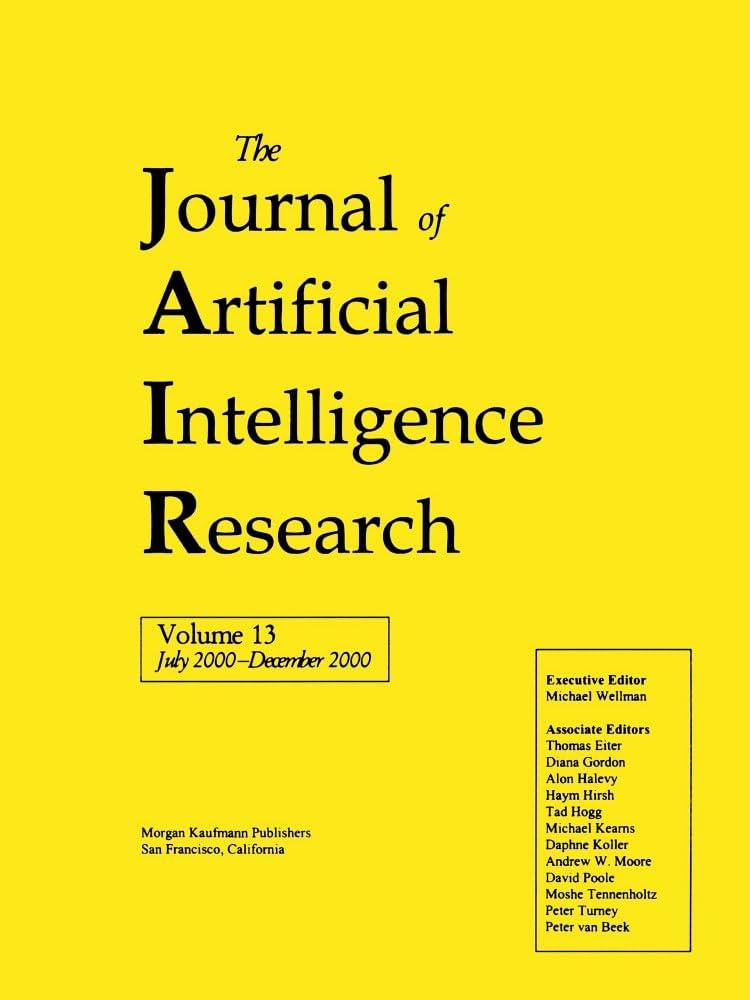Sequence-Oriented Diagnosis of Discrete-Event Systems
IF 4.5
3区 计算机科学
Q2 COMPUTER SCIENCE, ARTIFICIAL INTELLIGENCE
引用次数: 1
Abstract
Model-based diagnosis has always been conceived as set-oriented, meaning that a candidate is a set of faults, or faulty components, that explains a collection of observations. This perspective applies equally to both static and dynamical systems. Diagnosis of discrete-event systems (DESs) is no exception: a candidate is traditionally a set of faults, or faulty events, occurring in a trajectory of the DES that conforms with a given sequence of observations. As such, a candidate does not embed any temporal relationship among faults, nor does it account for multiple occurrences of the same fault. To improve diagnostic explanation and support decision making, a sequence-oriented perspective to diagnosis of DESs is presented, where a candidate is a sequence of faults occurring in a trajectory of the DES, called a fault sequence. Since a fault sequence is possibly unbounded, as the same fault may occur an unlimited number of times in the trajectory, the set of (output) candidates may be unbounded also, which contrasts with set-oriented diagnosis, where the set of candidates is bounded by the powerset of the domain of faults. Still, a possibly unbounded set of fault sequences is shown to be a regular language, which can be defined by a regular expression over the domain of faults, a property that makes sequence-oriented diagnosis feasible in practice. The task of monitoring-based diagnosis is considered, where a new candidate set is generated at the occurrence of each observation. The approach is based on three different techniques: .1/ blind diagnosis, with no compiled knowledge, .2/ greedy diagnosis, with total knowledge compilation, and .3/ lazy diagnosis, with partial knowledge compilation. By knowledge we mean a data structure slightly similar to a classical DES diagnoser, which can be generated (compiled) either entirely offline (greedy diagnosis) or incrementally online (lazy diagnosis). Experimental evidence suggests that, among these techniques, only lazy diagnosis may be viable in non-trivial application domains.离散事件系统的序列诊断
基于模型的诊断一直被认为是面向集合的,这意味着候选是一组故障或故障组件,它解释了一组观察结果。这个观点同样适用于静态和动态系统。离散事件系统(DESs)的诊断也不例外:候选系统通常是一组故障或故障事件,发生在符合给定观测序列的DESs轨迹中。因此,候选模型不嵌入故障之间的任何时间关系,也不考虑同一故障的多次出现。为了提高诊断解释和支持决策,提出了一种面向序列的诊断视角,其中候选是在DES轨迹中发生的故障序列,称为故障序列。由于故障序列可能是无界的,因为相同的故障可能在轨迹中出现无限次,因此候选集合也可能是无界的,这与面向集的诊断相反,面向集的诊断是由故障域的幂集限定的。然而,一个可能无界的故障序列集被证明是一种规则语言,它可以用故障域上的正则表达式定义,这一特性使得面向序列的诊断在实践中是可行的。考虑了基于监测的诊断任务,在每次观测发生时生成一个新的候选集。该方法基于三种不同的技术:1/盲诊断,不编译知识;2/贪婪诊断,全知识编译;3/懒惰诊断,部分知识编译。我们所说的知识是指与经典DES诊断程序稍微相似的数据结构,它既可以完全脱机(贪婪诊断)生成(编译),也可以增量在线(惰性诊断)生成(编译)。实验证据表明,在这些技术中,只有惰性诊断可能在重要的应用领域是可行的。
本文章由计算机程序翻译,如有差异,请以英文原文为准。
求助全文
约1分钟内获得全文
求助全文
来源期刊

Journal of Artificial Intelligence Research
工程技术-计算机:人工智能
CiteScore
9.60
自引率
4.00%
发文量
98
审稿时长
4 months
期刊介绍:
JAIR(ISSN 1076 - 9757) covers all areas of artificial intelligence (AI), publishing refereed research articles, survey articles, and technical notes. Established in 1993 as one of the first electronic scientific journals, JAIR is indexed by INSPEC, Science Citation Index, and MathSciNet. JAIR reviews papers within approximately three months of submission and publishes accepted articles on the internet immediately upon receiving the final versions. JAIR articles are published for free distribution on the internet by the AI Access Foundation, and for purchase in bound volumes by AAAI Press.
 求助内容:
求助内容: 应助结果提醒方式:
应助结果提醒方式:


